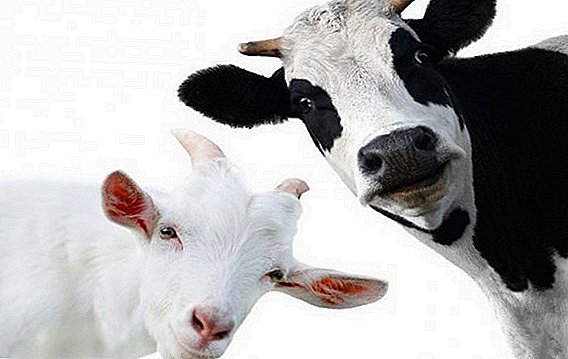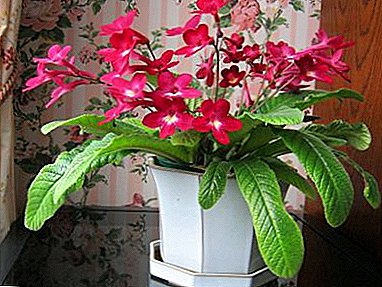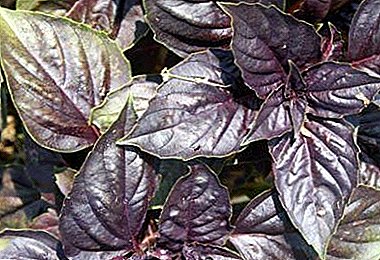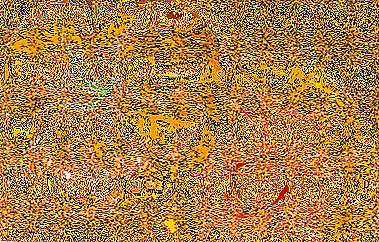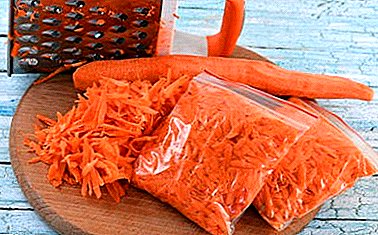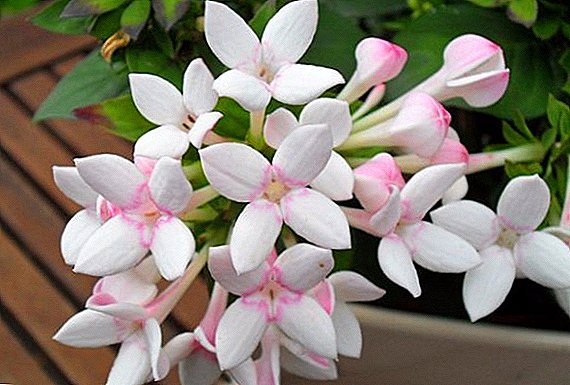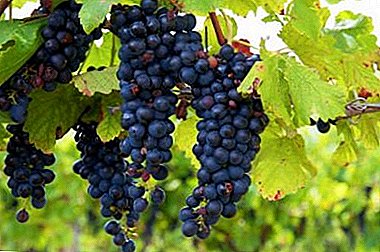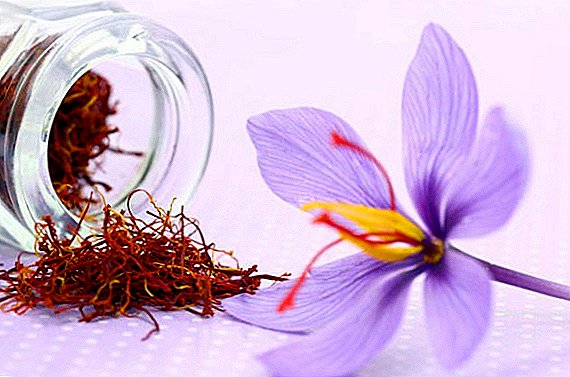 Many people have heard about saffron spice, but not everyone had a chance to try it - it hurts the prices bite. It is this spice that is rightfully considered the most expensive in the world, which is confirmed even by the corresponding entry in the Guinness Book of Records. The transcendental cost of saffron is explained by a very labor-intensive production technology: it is necessary to collect it manually, and the yield from the raw material is very small (10 kg per 1 ha). To have an idea of how expensive it is to buy seasoning, we give a few numbers. Iranian saffron is considered the cheapest - $ 460 per kilogram. The most expensive - Spanish saffron (15 thousand dollars / kg) and Kashmir (30 thousand dollars / kg).
Many people have heard about saffron spice, but not everyone had a chance to try it - it hurts the prices bite. It is this spice that is rightfully considered the most expensive in the world, which is confirmed even by the corresponding entry in the Guinness Book of Records. The transcendental cost of saffron is explained by a very labor-intensive production technology: it is necessary to collect it manually, and the yield from the raw material is very small (10 kg per 1 ha). To have an idea of how expensive it is to buy seasoning, we give a few numbers. Iranian saffron is considered the cheapest - $ 460 per kilogram. The most expensive - Spanish saffron (15 thousand dollars / kg) and Kashmir (30 thousand dollars / kg).
Like most spices, saffron is endowed with not only peculiar taste and aromatic qualities, but also a number of useful properties. We offer to get acquainted with this seasoning closer and learn about the features of its application.
Saffron (Crocus): Description of Useful Seasoning
 Herbaceous perennial plant saffron (Arab. Zafaran) comes from the Middle East, India and Asia Minor. Included in the family of iris. His other name is Crocus. (lat. Crocus sativus), in Europe is called the "plant of the sun". You can learn it by long standing narrow linear leaves growing from the root, and beautiful funnel-shaped purple flowers. The duration of flowering at the crocus is very small - within seven days.
Herbaceous perennial plant saffron (Arab. Zafaran) comes from the Middle East, India and Asia Minor. Included in the family of iris. His other name is Crocus. (lat. Crocus sativus), in Europe is called the "plant of the sun". You can learn it by long standing narrow linear leaves growing from the root, and beautiful funnel-shaped purple flowers. The duration of flowering at the crocus is very small - within seven days.
Each flower of saffron contains three burgundy stamens with light patches. The crushed dried stigmas are a world famous seasoning that has a strong aroma and a spicy bitter-honey taste. In addition, they are used as food coloring, in perfumery and medicine. Due to the content of vitamins, minerals and essential oils, the saffron stigmas have beneficial properties for human health. Externally, the spice looks like thin strings or veins of red-brown or dark red color.
Did you know? Saffron - so famous and ancient plant (first mentioned in 1489), that information about it is contained in many long-standing medical and literary sources. So, in the "Song of Songs" with the saffron beauty of the bride is compared. The medicinal properties of the plant are described in Chinese treatises on medicine and in Egyptian manuscripts. Found and old drawings depicting the process of collecting crocuses.In the world annually harvested 300 tons of spice. Most of the world crop (90%) comes from Iran. Also the production of saffron is common in Spain, Greece, France, USA, China, Azerbaijan, Japan and other countries.
Chemical composition and nutritional value of saffron
 To understand what is so useful this seasoning and what are the healing properties of saffron, consider its chemical composition. Spice contains vitamins (B1, B2, B3, B9, C, A, PP), mineral substances (iron, calcium, magnesium, potassium, zinc, manganese, copper), carotene, nitrogenous substances, essential oils (saffranol, limonene, geraniol , cineol, pinene, linalool, terpinen, etc.).
To understand what is so useful this seasoning and what are the healing properties of saffron, consider its chemical composition. Spice contains vitamins (B1, B2, B3, B9, C, A, PP), mineral substances (iron, calcium, magnesium, potassium, zinc, manganese, copper), carotene, nitrogenous substances, essential oils (saffranol, limonene, geraniol , cineol, pinene, linalool, terpinen, etc.).
Food composition of saffron looks like this:
- proteins - 11.43 g / 100 g of the product;
- fats - 5.85 g;
- carbohydrates - 61.47 g.
Medicinal properties of saffron: why is the plant useful?
The properties of saffron were investigated in ancient times, seasoning was used to make healing ointments, skin care products, and infusions for women's health. For long years of consumption and for therapeutic purposes The beneficial effect of saffron on:
- nervous system;
- brain activity;
- the work of the digestive system;
- urinary system in women;
- improving erection;
- strengthening the cardiovascular system;
- vision restoration;
- increased sexual desire.
Did you know? Today, saffron-based products are used as an additional treatment for about 100 diseases.Saffron is used as an antioxidant - it is able to cleanse the body of toxins. Especially well proven in alcohol intoxication. Saffron is also used to cleanse the kidneys and bladder. Used as a carminative, choleretic, diuretic and antispasmodic.
 Saffron is a good antidepressant, effective analgesic and aphrodisiac.
Saffron is a good antidepressant, effective analgesic and aphrodisiac.
Recent studies in the field of cancer use this herb to stop the growth of cancer cells, in particular, in liver cancer.
Saffron consumption is advised to people working in polluted enterprises, since this spice has anti-carcinogenic and anti-mutagenic properties.
How to apply saffron: recipes of traditional medicine
In official medicine, crocus is part of eye drops and fortifying tinctures. Folk medicine also uses saffron in many recipes for various diseases.
The most common use of saffron is daily consumption of saffron stigmas. For its preparation it is necessary to dissolve 1-2 fragments in 100-250 g of warm milk or water. This infusion is able to beneficially affect the human body as a whole, improve memory, stimulate the brain.
Another recipe for universal infusion: pour 15 ml of boiling water for 3-5 minutes, heat on the fire, add 300 ml of water, remove before boiling. After the veins settle to the bottom, the infusion can be taken 200 ml before meals.
Important! Since the herb saffron has both beneficial properties and can be harmful, it is obligatory to consult a doctor before using it for therapeutic purposes.Also make a tincture of stigmas: 1 tsp. Stigma insist in a glass of boiling water for half an hour, strain and cool. Take 1 tbsp. spoon three times daily before meals.
 Infusion with honey (1 tbsp. Spoon of honey, 1 tsp of saffron powder) is used to crush the stones in the kidneys and bladder and as a means to remove bile. Dose for a single dose - 25 g before meals. Also, with this disease, a decoction of a mixture of: saffron, ivy, tea rose petals, fragrant violet and lilac leaves is taken throughout the day. 2 tbsp. spoons of ingredients in equal shares brew in 2 liters of boiling water.
Infusion with honey (1 tbsp. Spoon of honey, 1 tsp of saffron powder) is used to crush the stones in the kidneys and bladder and as a means to remove bile. Dose for a single dose - 25 g before meals. Also, with this disease, a decoction of a mixture of: saffron, ivy, tea rose petals, fragrant violet and lilac leaves is taken throughout the day. 2 tbsp. spoons of ingredients in equal shares brew in 2 liters of boiling water.
For cystitis, it is advised to mix saffron veins into cranberry juice, cranberry juice, or to drink an infusion of 2-3 veins, 100 ml of fresh cranberry juice, diluted in a glass of warm water. The infusion is drunk three times a day in 100 ml before meals, necessarily combining with drinking large amounts of water.
The beneficial properties of saffron for the urogenital system in women - the normalization of the menstrual cycle, pain relief during menstruation. For lower abdominal pains, it is recommended to chew the veins of saffron (5 pieces) with water. If you have problems with the cycle, you can try a decoction of herbs: the pine forest (25 g), saffron (25 g), water (500 g). Take on an empty stomach 100 ml.
 To cleanse the body on an empty stomach drink an infusion of 10 stigmas of saffron (3 veins), 10 pieces of light raisins and half a cup of cold boiled water, settled overnight. The regimen is twice a day for two months.
To cleanse the body on an empty stomach drink an infusion of 10 stigmas of saffron (3 veins), 10 pieces of light raisins and half a cup of cold boiled water, settled overnight. The regimen is twice a day for two months.
Among the beneficial properties of saffron for men, it can be noted that seasoning is a natural aphrodisiac without side effects. To increase the potency, add saffron, ginger and black pepper to vegetable, meat and fish dishes.
Important! Folk remedies with saffron in the composition are not an alternative to drugs and do not replace the main treatment. This is just an additional therapy.Saffron essential oil is used to treat asthma and upper respiratory tract diseases.
Saffron has a healing effect when applied externally. It is used as lotions for headaches and insomnia. With the same problems, it is advised to inhale the scent of the powder tied into a cloth bag. Or rub into the nostrils of the slurry of 3-4 veins, mixed with three drops of melted butter.
For the treatment of purulent wounds and rubbing of skin lesions, use a decoction of crocus leaves: 2 tbsp. spoon / 500 ml of water.
 Saffron is very useful for the eyes, its medicinal properties have been proven in conjunctivitis, barley. In the case of these diseases, apply 15-minute compresses with a gruel of 5 ground veins connected to the infusion of rose water (in equal amounts).
Saffron is very useful for the eyes, its medicinal properties have been proven in conjunctivitis, barley. In the case of these diseases, apply 15-minute compresses with a gruel of 5 ground veins connected to the infusion of rose water (in equal amounts).
Saffron has found application in cosmetology. A 20-minute mask of 1 tsp of saffron, 1 tsp of honey and 1 tsp of sour cream has a rejuvenating and refreshing effect. Saffron decoction caressed hair.
How to use saffron in cooking
Saffron is able to give a special, unique taste and a beautiful golden hue to almost any dish. In cooking, it is often called the "king of spices" or "spice number 1." It goes well with meat, fish and vegetable dishes. Spice for color and flavor is added to the recipe of cheeses, sausages, oils, beverages, confectionery and bakery products, creams, desserts. Saffron does not do without traditional Indian and Spanish cuisine. First of all, it concerns rice dishes. Spice is also used in the preparation of liqueurs and cocktails.
Important! The permissible rate of saffron is 1 g (400 veins) per year.Before adding to the food, saffron is usually roasted over low heat, ground to a powder and mixed with a spoonful of warm milk or water. So the aroma of spice is better manifested. Then the mixture is mixed into dishes. It is possible and just 15-20 minutes before use, pour 1 g of spice with 120 ml of warm water or milk. Alcohol tincture is also used - the stigma is first dissolved in alcohol and then diluted with water.
 It is also recommended to add saffron to hot dishes 4-5 minutes before the end of the heat treatment. It is better to include the spice in the dough when kneading or just before baking. The norm is 0.1 g saffron per 1-1.5 kg of dough or dish.
It is also recommended to add saffron to hot dishes 4-5 minutes before the end of the heat treatment. It is better to include the spice in the dough when kneading or just before baking. The norm is 0.1 g saffron per 1-1.5 kg of dough or dish.
"King of spices" is usually present in the food itself, with other spices are not combined.
Important! Since saffron has a strong smell and a sharp taste, it is important to follow the dosages stated in the recipe when preparing dishes with its addition. Otherwise, it can lead to food damage and even poisoning.
Saffron Harm
Any remedy used for the purpose of treatment, including saffron, can have both beneficial properties and contraindications to use.
The use of saffron is prohibited:
- pregnant women;
- women during lactation;
- children up to two years;
- hypertensive patients;
- diabetics;
- people with cardiovascular diseases.


